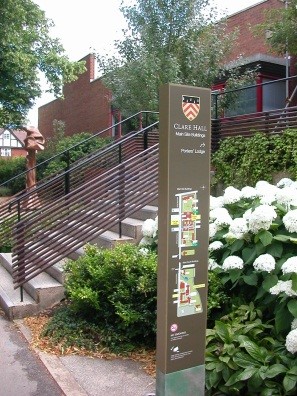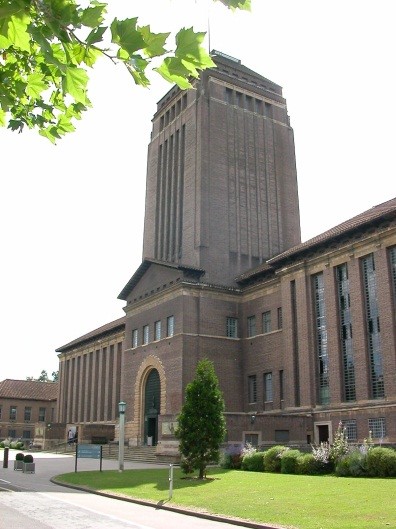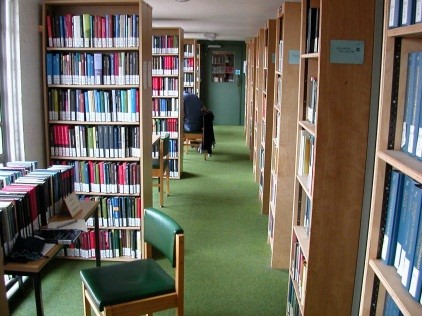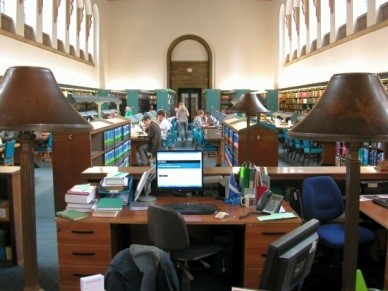- HOME
- About AIS
- Study Abroad Program
- Clare Hall, University of Cambridge Summer Visiting Student Program Report
Clare Hall, University of Cambridge Summer Visiting Student Program Report
2013 Academic Year
Zen-U Hotta: Doctoral Student, Department of Advanced Interdisciplinary Studies, Graduate School of Engineering, The University of Tokyo
1. Program Outline
This summer I had the opportunity to participate in the summer study abroad program administered by the RCAST (Research Center for Advanced Science and Technology) at the University of Tokyo with the cooperation of Clare Hall at the University of Cambridge. There were three primary purposes: 1) to further my doctoral research using resources available at the University of Cambridge, 2) to attend the Interdisciplinary Summer School II offered by the university, and 3) to exchange diverse information and knowledge with other researchers and students. I stayed in the United Kingdom from the beginning to the end of August; the first two weeks were spent on the summer school; the remaining two weeks were spent on research; these entire four weeks were also spent on academic exchanges with other researchers and students.
2. Clare Hall
Since the summer study abroad program is based on an agreement made between RCAST and Clare Hall, I was assigned a room in the Brian Pippard Building of Clare Hall. Clare Hall is a constituent college of the University of Cambridge, founded by Clare College (previously known as Clare Hall from 1338?1856) in 1966 as a college for advanced study, admitting only postgraduate students. As such, the hall's buildings are relatively new, allowing for a comfortable environment for living and studying.
Clare Hall has two distinct features. One is that it accepts many visiting researchers and students from overseas and places great value on international academic exchanges. Numerous researchers and students from affiliated overseas research institutions visit Clare Hall throughout the year, especially during summertime when domestic Cambridge researchers and students are on leave for vacation. Brian Pippard Building, the dormitory I stayed in, was no exception, with a number of students from continental European countries, notably Germany.
The other feature of Clare Hall is its focus on advanced study, just like RCAST. Many of the researchers and students I met were no exception, pursuing researches in unique interdisciplinary fields such as financial geography and sustainable development of sports.

Clare Hall

The University Library
3. Summer School
What makes Cambridge's International Summer School Programs different from many other summer school programs is that the former is primarily opened towards non-Cambridge students. The courses are more or less adjusted to the level of Cambridge undergraduates, but the students are from all age groups, academic backgrounds, and countries ? from college freshmen to retired executives, from undergraduates to university professors with doctorates, from China to Brazil.
There are a number of programs in the International Summer School Programs, including programs such as History Summer School, Shakespeare Summer School, Medieval Studies Summer School, and Science Summer School, and all students take 2 or 3 courses among the courses offered in their respective programs. I have chosen to take Interdisciplinary Summer School II. Here, "interdisciplinary" does not mean that the program offers both science and humanities courses; it means that all courses are themselves interdisciplinary in nature, combining two or more academic disciplines. It is sort of similar to the barrier-free research group at RCAST, but the "interdisciplinary" nature of the Interdisciplinary Summer School is even broader as it encompasses not only sciences and engineering, but also history and other humanities.
I decided to take the maximum number of courses and selected "Archaeology and the Discovery of the World," "A History of Mathematical Ideas from the Ancients to the 19th Century," and "Renaissance Engineering," which had some similarities with my field of research at the University of Tokyo.
A) "Archaeology and the Discovery of the World" was not a class on archaeology nor was it a class on anthropology. It was a class on history of the academic development of archaeology ? the development in how humans treated records and resources on the backdrop of scientific breakthroughs, cultural background, and political changes.
While history of the academic development of archaeology is interdisciplinary, combing history with archaeology, I have learned that archaeology itself is also highly interdisciplinary, combining more than a dozen of academic fields. This is very similar to the academic field of barrier-free studies, which I am pursuing at RCAST; barrier-free studies is an amalgam of computer engineering, mechanical engineering, psychology, education studies, political science, sociology, economics, and business science.
The lecturer was a specialist of the Aztecs, but the course covered a wide range of regions, including Japan, China, Greece, Egypt, Rome, and Mesopotamia. Focus was also given to archaeology in the U.K., such as excavations sites in Britain, noteworthy archaeologists who were graduates Cambridge, the British Museum, and the Stonehenge.
One interesting fact I found out about the courses offered at Cambridge is that lecturers do not to lecture on what can be read from books and other reference texts; they take pride in making lectures that are original and that reflect the best of their knowledge and experience. This is largely different from the information seminar style of Japan or the Socratic style popular in the U.S.
B) "A History of Mathematical Ideas from the Ancients to the 19th Century" was also very interdisciplinary, covering philosophy, religious studies, ancient, medieval, Renaissance, and modern history, physics, and engineering, in addition to mathematics.
Highlights of the lectures include defining the true purpose of studying history (judging the past from modern-day viewpoint is wrong), difference between counting/calculation and mathematics, lack of mathematics in ancient Egypt and ancient Mesopotamia, the wrongness of belief that Euclid is founder of mathematics, the "mythology" of Pythagoras, the fact that Arabic numerals were not invented by the Arabs, the difference between treating infinity in geometry and calculus, the greatness of Descartes in algebraic geometry, the eccentric personality of Newton, etc.
C) "Renaissance Engineering" was taught by the same lecturer as that of "A History of Mathematical Ideas from the Ancients to the 19th Century," and the contents of this class was just as jaw-dropping. As the course name suggests, "Renaissance Engineering" was highly interdisciplinary given its combination of engineering, physics, architecture, fine arts, theology, physics, political science, and many other disciplines.
Highlights of the lectures include innovative architectural technologies used for cathedrals, rivalry between Rome and Florence/Tuscany, influence of Greek philosophy and Byzantium, the low status of engineering as compared to the "sciences," the "mediocrity" of Leonardo da Vinci as an engineer, why pictures and layouts of "machines that do not move" became popular, the impact of Bessarion on the Renaissance, the role of Platon as a "prophet," the "real" impact of Copernicus (or the lack of such), the cleverness of Galileo in writing his papers, etc.
Being an engineer myself, it was meaningful to learn about the development of engineering in the Western world, along with its social and academic status.
D) One-hour evening lectures were made available to all students every day. Topics included the U.K. during the 1920s, medieval machines, restoration/refurbishment of old paintings, human-sacrifice rituals of the Aztecs, etc. Also, the summer school office held a party one night to commemorate its 90th anniversary at Madingley Hall, located right next to a picturesque English garden (actually a collection of different gardens).

Inside the University Library

4. Research
As mentioned before, I had the chance to exchange information and opinions with various researchers and students at Clare Hall and the summer school. However, it was a pity that researchers in my fields of research, social capital and barrier-free technologies, were not on campus due to summer vacation.
Nonetheless, I could pursue my research during the remaining two weeks by accessing books and papers at the University Library. The library has about 8 million volumes in its collection, many of which are not available in Japan. There are many other libraries on campus, some belonging to colleges, but the University Library was more than sufficient for me to conduct research in relevant past literature.
During weekends, I traveled to historic and academic sites in London, Windsor, and Salisbury, chiefly to match the information I learned from summer school with real monuments, artifacts, paintings, documents, and buildings, and to also do gain an image of the British barrier-free and social welfare systems in urban settings.
(Oct. 11th 2013)




